If you are curious about what curry tastes like, this extensive guide will take you through the unique and pleasant aroma of this beloved dish. It covers global differences from India to Thailand to Japan and highlights what makes a curry taste good.
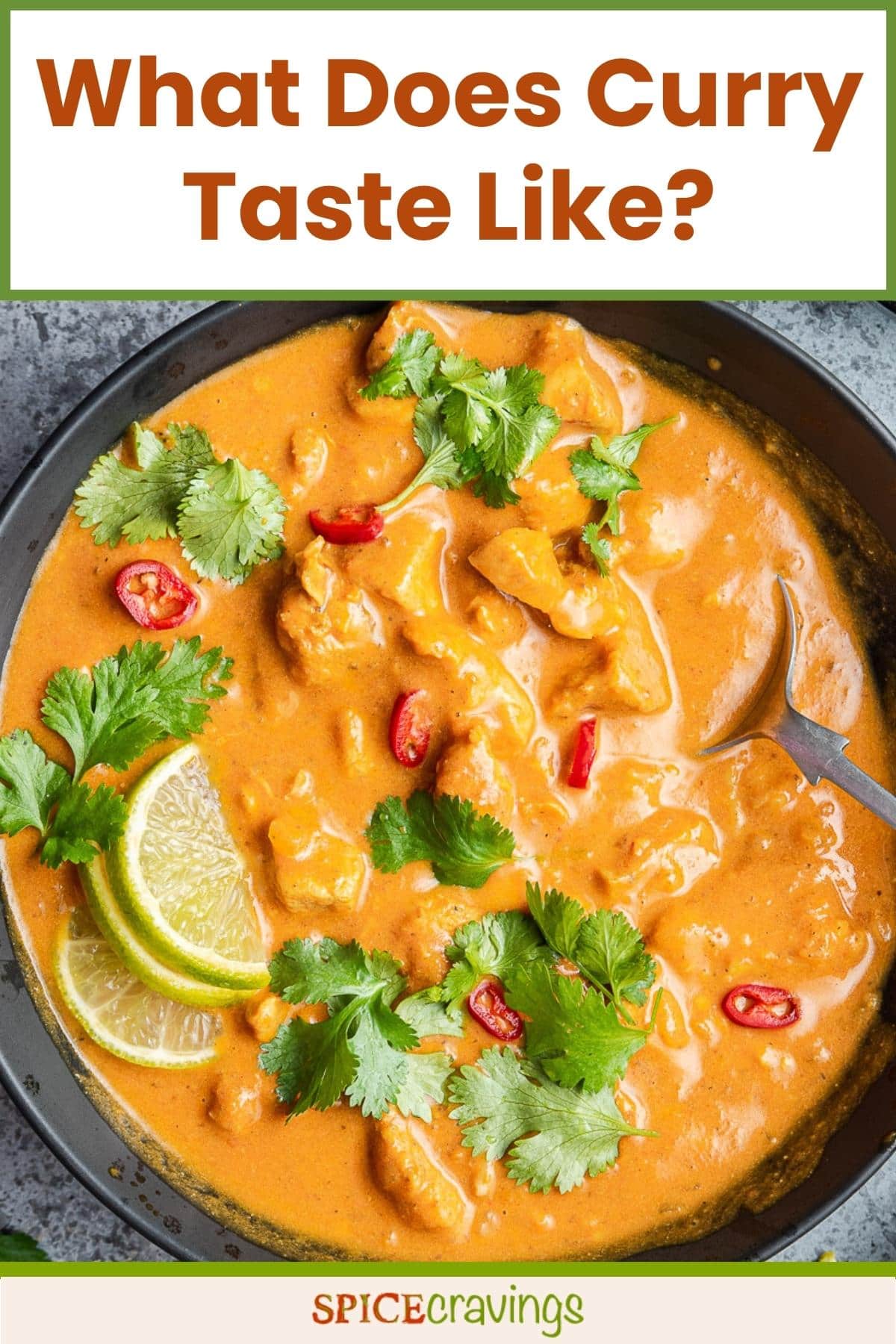
Want to save this recipe?
Curry has been around since the 15th century - and for a good reason. It is a flavor-packed dish bursting with the right balance of spice, warmth, and heat.
Because there are so many variations, it's interesting to note the unique flavor of curry based on region or ingredients.
Let's get started!
Jump to:
What is Curry?
Curry is a meal of either meat, vegetables, or both, that has been seasoned with aromatics, chilies, and spices, all layered and properly added in the right order.
Origin of Curry
The word 'curry' comes from the Tamil (Indian language) word, 'kari', meaning sauce, and refers to meat or vegetable-based stew.
The origin of curry has been noted to first appear around 2600 BCE, in the Indus Valley Civilization, with evidence suggesting the use of a mortar and pestle used to pound whole spices. You can learn more about this in my guide on What is Curry?
What Does Curry Taste Like?
Curry is often described as a dish that is earthy, spicy, warming, or even sometimes sweet.
It is a well-balanced, richly spiced dish with notes of deep savory flavors from turmeric, coriander, cumin, bay leaf, cinnamon, and cloves, just to name a few. Black pepper and red chilies provide spiciness and a rich hue.
The taste of curry can vary from region to region, depending on local ingredients, spices, and topography.
What Does Curry Smell Like?
Curry has a pungent smell, with strong notes of cumin, garlic, and onions. This is due to the heavy use of spices and aromatics.
What Are The Basics of Making Curry?
Here are the basic components that curry is made of :
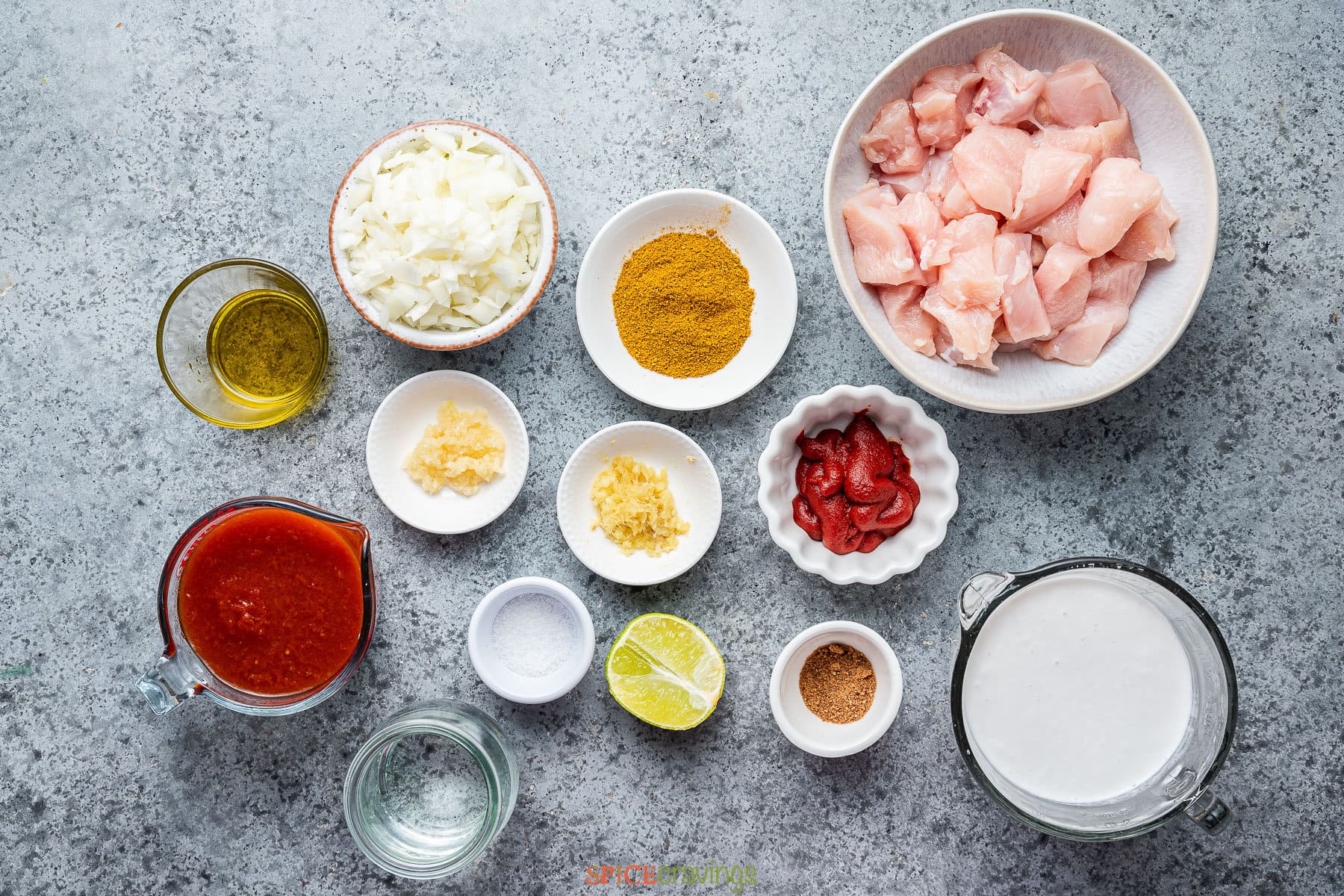
- Fat - this can be oil, either avocado, olive or coconut, butter, or ghee.
- Aromatics - aromatics like ginger, garlic, onions, or scallions add a deep, savory flavor.
- Spices - spices can be used in both whole and ground forms. Most curry recipes may include spices such as cumin, coriander, turmeric, garam masala, cayenne, Kashmiri red chili powder, cinnamon, cloves, and cardamom.
- Acid - many curry recipes include an acid to add balance and a pop of brightness. This can be lime juice, lemon juice, yogurt, tomato paste, or tamarind.
- Vegetables - vegetables like carrots, green peas, cauliflower, bell peppers, broccoli, zucchini, pumpkin, and summer squash are included in many curries.
- Protein - many popular meat-based curries include chicken, goat, lamb, or mutton, along with seafood like salmon. Vegetarian options include beans and legumes, like chickpeas or lentils, paneer, or tofu.
- Finish - to really give it that wow factor, curries will sometimes include the finishing touch of Tadka (bloomed spices in hot oil) or a Garnish like fresh green herbs.
What Makes Curry Taste Good?
Curry tastes so good because of its intricate balance of dry spices, fresh herbs, and aromatics mixed with the main ingredients. Here is a breakdown of What Defines the Taste of Curry?
- Spices - spices, either whole or ground, are the primary and distinguishing factor of many curries. Quality, quantity, and freshness play a big part in how much flavor will actually release during the cooking process and into the final dish.
- Aromatics - onions, scallions, garlic, and ginger create a flavor base that is super savory and comforting.
- Ingredients - fresh ingredients like chicken, fish, meat, and vegetables create a well-rounded and complete meal. The choice of protein and vegetables also dictates the choice of spices and eventual taste.
You can also learn more about curry in my cookbook: The Electric Pressure Curry Cookbook
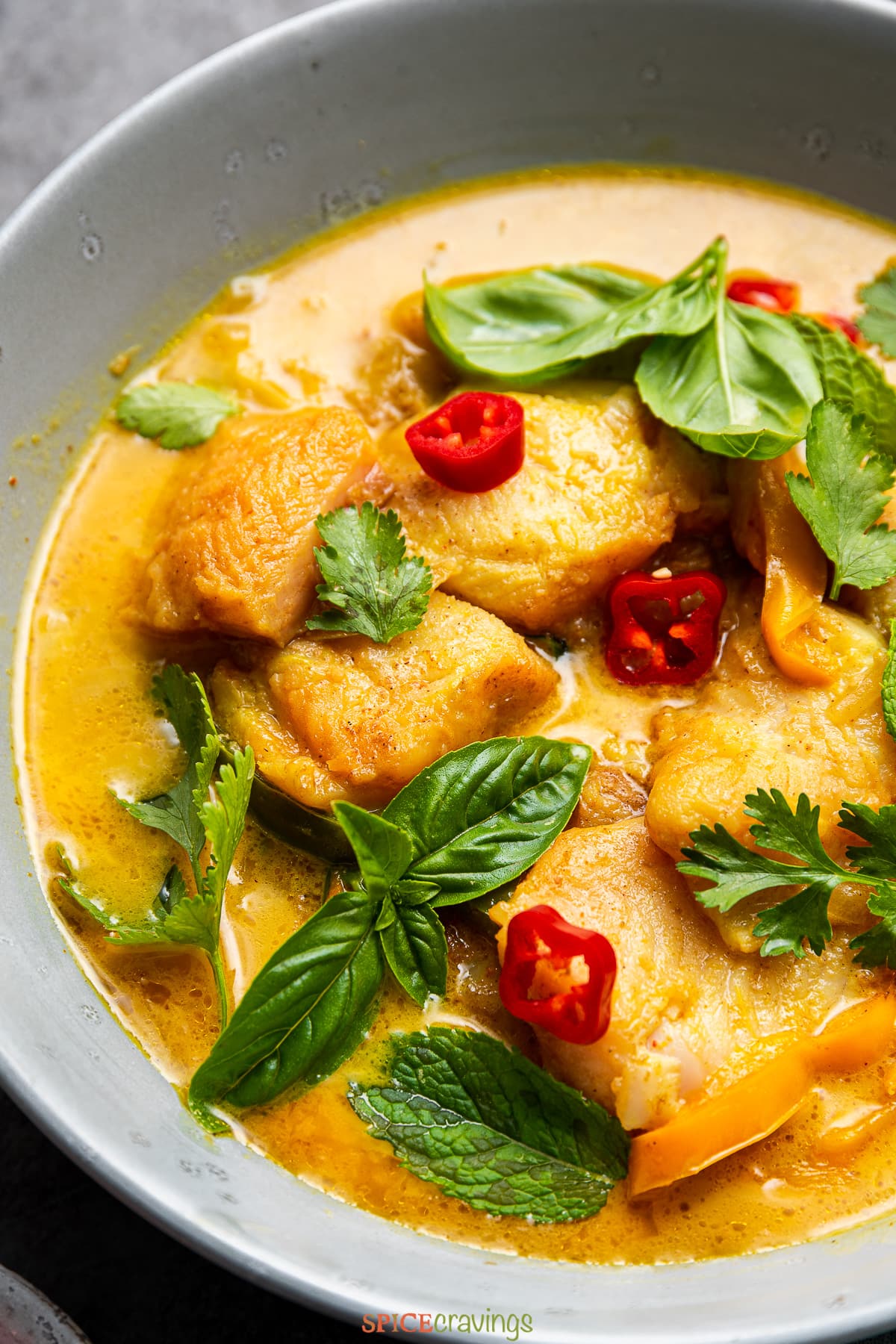
Curry Powder, Curry Paste, and Curry Leaves
Curry Powder
Curry powder is a unique mix of ground spices, depending on the country and region. Contrary to popular belief, curry powder is a British invention and is not used in traditional Indian cooking.
What spices go into curry powder? The generic 'curry powder' typically includes a mix of cumin, coriander, turmeric, ginger, and black pepper.
What does curry powder taste like? It's a mild spice mix that has a deep, earthy flavor with brightness and warmth.
Curry Paste
Curry paste is a fresh mix of aromatics and chilies, including such ingredients as garlic, ginger, galangal, lemongrass, kefir lime leaves and/ or herbs, and is a key ingredient in Thai cuisine.
These ingredients are often pureed into a thick paste and thinned out during cooking with either coconut milk or cream.
Curry Leaves
Curry leaves are bright to dark green, leaves with a citrus-like aroma and flavor profile. With a balanced bittersweet taste, they are used in both fresh and dry recipes across southern India.
Types of Curry Around Asia
The spices and seasonings used in curries in India are different than in Asian curries. Here's a breakdown of the taste of curry based on country:
India
Indian curry varies so much in taste because regional specialties are based on locally grown spices, seasonal ingredients, and climate. For example, spicy vindaloo tastes very different than warming and creamy korma.
What does curry sauce taste like? The foundation of making a curry includes tempering spices in hot fat, adding aromatics and chilies, then cooking the meat and/ or vegetables in this delicious base. This, in turn, creates a curry sauce that's earthy, spicy, smoky, and slightly sweet.
What does curry chicken taste like? Curry chicken is deeply savory and rich, with warming, bright, bitter counterpoints.
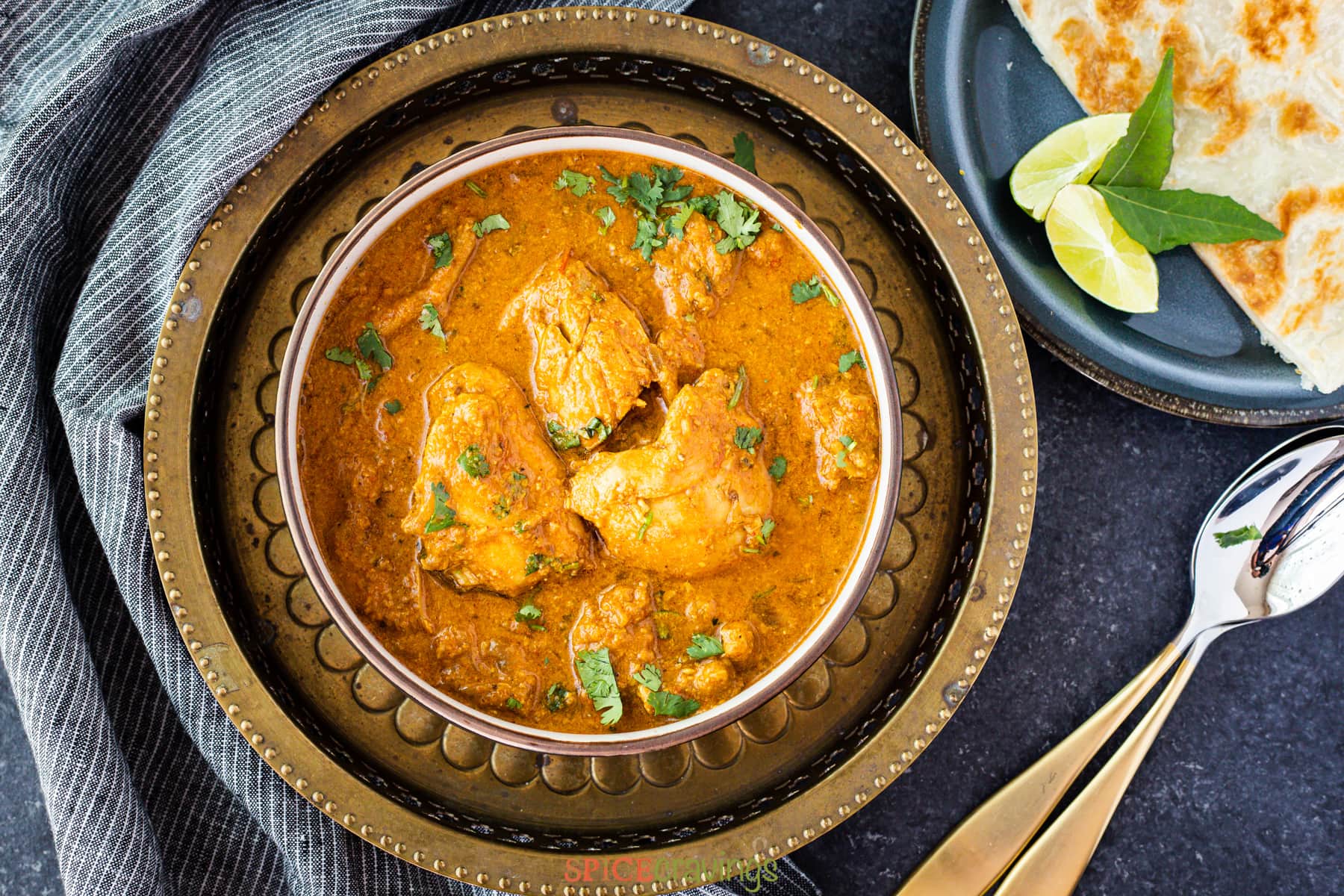
Thailand
The main component that sets Thai curries apart from all others is their heavy use of coconut milk. That, and their ability to strike the right balance between spicy, sweet, salty, and sour.
Thailand has some unique regional spice blends, including Red, Green, Yellow, Panang, and Massaman.
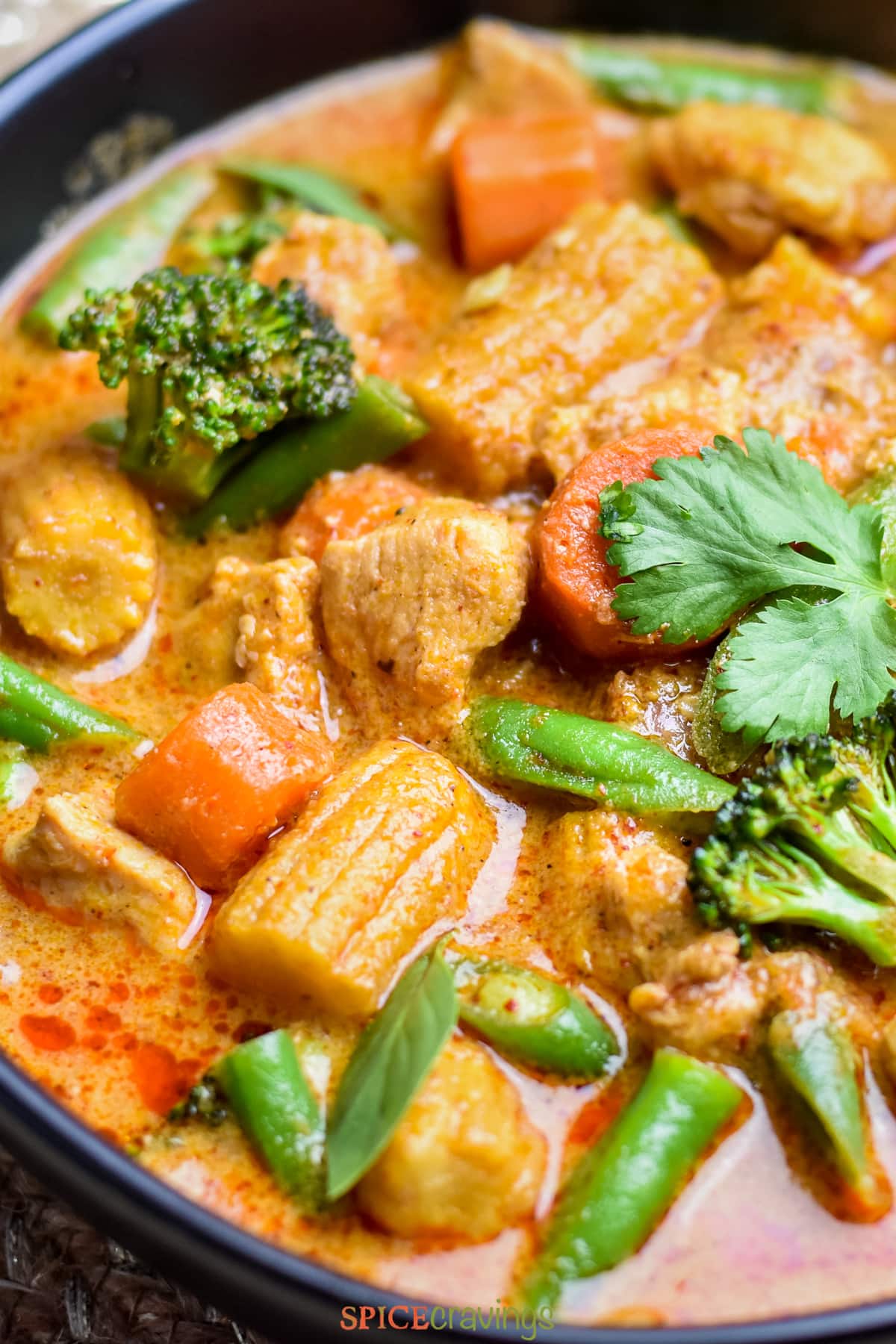
What does red curry taste like? Red curry is heavy on red chiles, which adds a bold and spicy flavor.
What does green curry taste like? Green curry, the spiciest of the bunch thanks to Thai chiles, is balanced with the sweetness of cilantro, basil, and kaffir lime leaves.
What does yellow curry taste like? Yellow curry is mild, with a warmth thanks to cumin, coriander, and turmeric.
What does Panang curry taste like? Panang balances sweet and savory, with background notes of nutty peanut flavor.
What does Massaman curry taste like? Massaman curry is a mix of Thai red curry with warming Indian spices to add depth, warmth, and spice all in one.
Japan
Japan adopted curry from the British Royal Navy and since then, it has expanded across the country. Japanese curries are known for their use of curry roux cubes. The ever-so-popular Kare Raisu is even considered the national dish.
What does Japanese curry taste like? Japanese curries are extremely aromatic and savory, with plenty of umami richness.
More Popular Curries Around the World
Curry is a popular dish featured in numerous countries and regions throughout the world. Here is a glance at each country's distinct versions:
Pakistan: The words 'Salan' and 'Shorba' replace the popular word curry in Pakistan. Many popular curries include Aloo Gosht and kadai chicken.
Bangladesh: The local Bengali curries in this region feature fresh fish, mustard seeds, and poppy seeds. Popular curries from Bangladesh include Hilsa (fish curry), and Chingri Malai (shrimp curry).
Sri Lanka: Sri Lankan curries typically use ingredients such as shredded coconut, coconut milk, curry leaves, mustard seeds, and tamarind. Popular curries include dal curry, green jackfruit curry, and white chicken curry.
Maldives: The Maldives is part of the southern region of the Indian subcontinent with heavy use of coconut and mustard. Popular curries include Mas Riha (fish curry).
Nepal: Nepal is a part of the northern region of the Indian subcontinent. Popular curries include Dal Bhat (rice and lentils).
Bhutan: Another region in the northern area, much of the influence on curry cuisine is based on climate and terrain. Popular curries include Ema Datshi (Yak cheese curry).
Middle East: Middle Eastern curries are unique in that they take use of fresh and abundant local fruits and nuts, like pomegranates, dates, figs, and pistachios. This adds a special sweet and savory flavor profile.
North Africa: North African curries, especially those that reign from Morroco, are flavored with warm and comforting spices like cinnamon and saffron. The popular dish Tagine is essentially a thick curry served over couscous.
East Africa: East African curries strike the closest resemblance to Indian curries and many are vegetarian-based, with a few meat dishes. Ethiopian Misir Wot or Key Wat are great examples.
United Kingdom: Ever since the British invention of curry powder in the 1800s, curry has been a sensation across Great Britain and the UK. Dishes like chicken tikka masala, chicken korma, rogan josh, and Madras curries are all popular here.
The Caribbean: The curries in Trinidad and Tobago are made with crab, shrimp, duck, chickpeas, and potatoes, whereas Jamaica has a curry goat that is a regional specialty. Many include the heavy use of cumin and curry powder.
South America: Just like most cooking in Latin America, many curries are heavy on beans and rice and use a base known as sofrito (onions, garlic, peppers, and cilantro) to flavor their dishes.

Frequently Asked Questions about Curry
Many southeast Asian curries feature coconut milk as opposed to broth or water. This is seen in Thai curries like red, yellow and green, and lends a sweet and creamy taste and texture.
That iconic yellow hue comes from turmeric, an earthy, bitter root that imparts a deep golden color. It can be used fresh or dried in many curry recipes.
Many curry recipes start with strong aromatics, like garlic and onions, which has sulfur-containing compounds. Because of this, the smell lingers for a while and does not go away.
To remove a lingering curry odor, make a vinegar spray by combining 1 cup water with 2 tablespoons white vinegar in a spray bottle. Spray all over the kitchen, including countertops, cabinets, and grease traps, along with any porous surfaces like curtains and drapes.
Curry can range from mild to medium to hot based on the number of fresh chilies and the amount of chile powder used in the recipe.
Curry has a well-balanced flavor profile that is rich and earthy, with a pungent bite and warming aroma.
The best way to prevent spices from burning is to first temper them in hot oil and to make sure you are using enough oil so that the spices do not stick to the pan.
Sweet bell peppers, chickpeas, broccoli, carrots, cauliflower and peas are all popular, and slightly sweet vegetables, that add texture and balance to most curry recipes.
More on Curry
Check out more Popular Curry Recipes in this Ultimate Curry Cookbook:

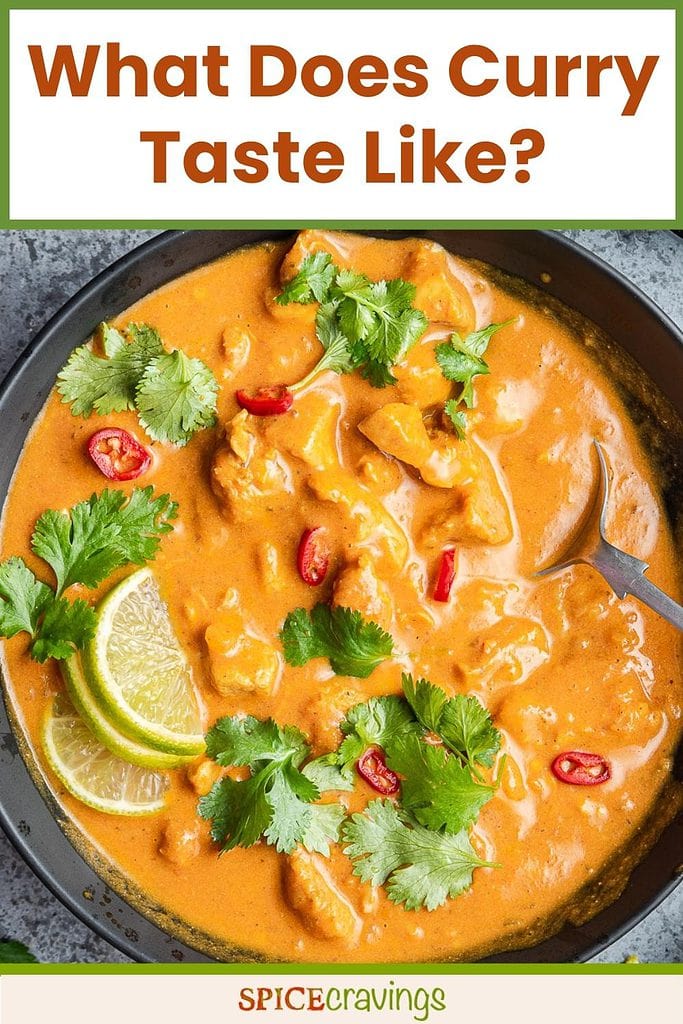
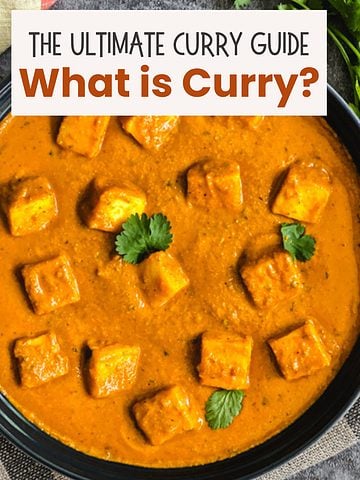
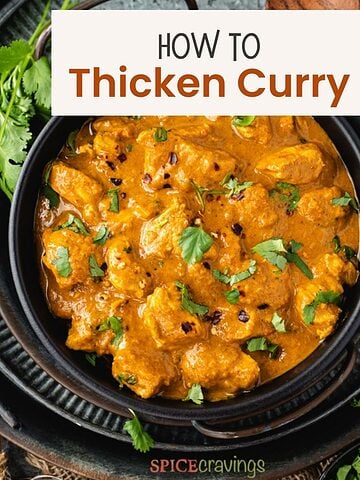
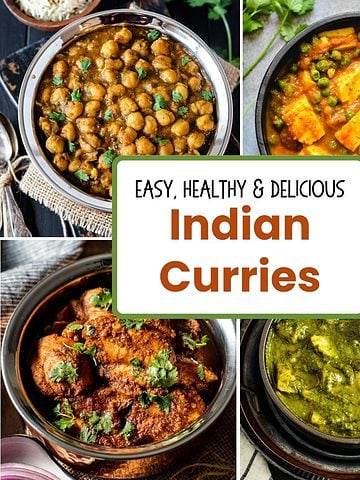
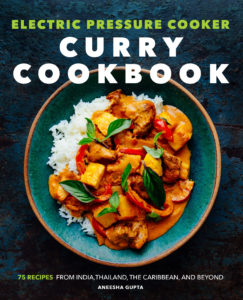
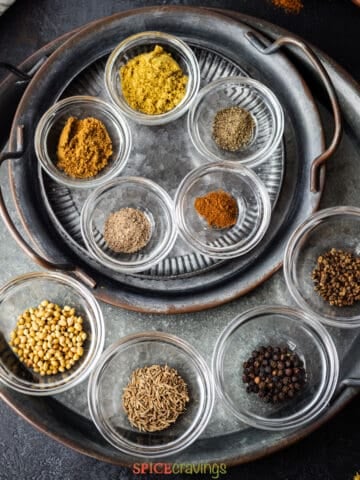
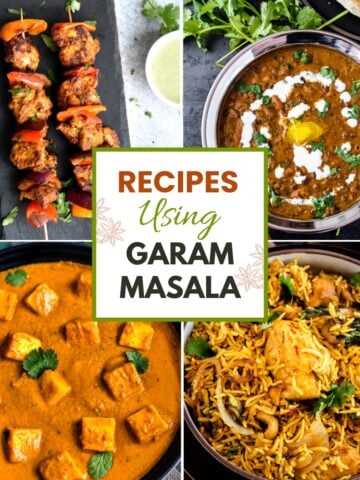
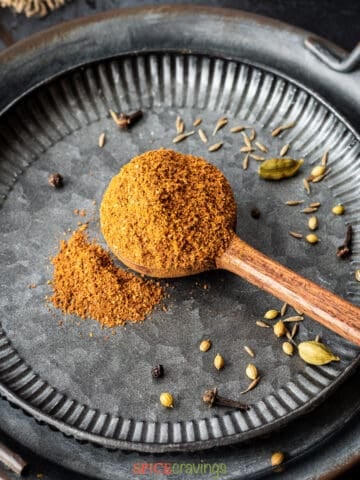
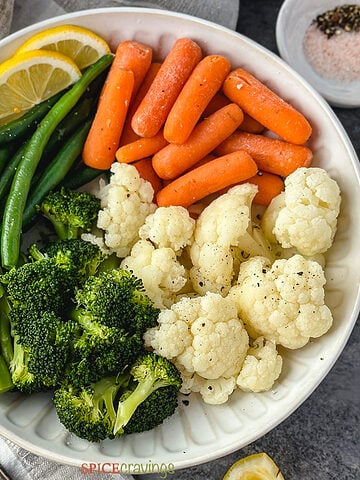
Leave a Reply